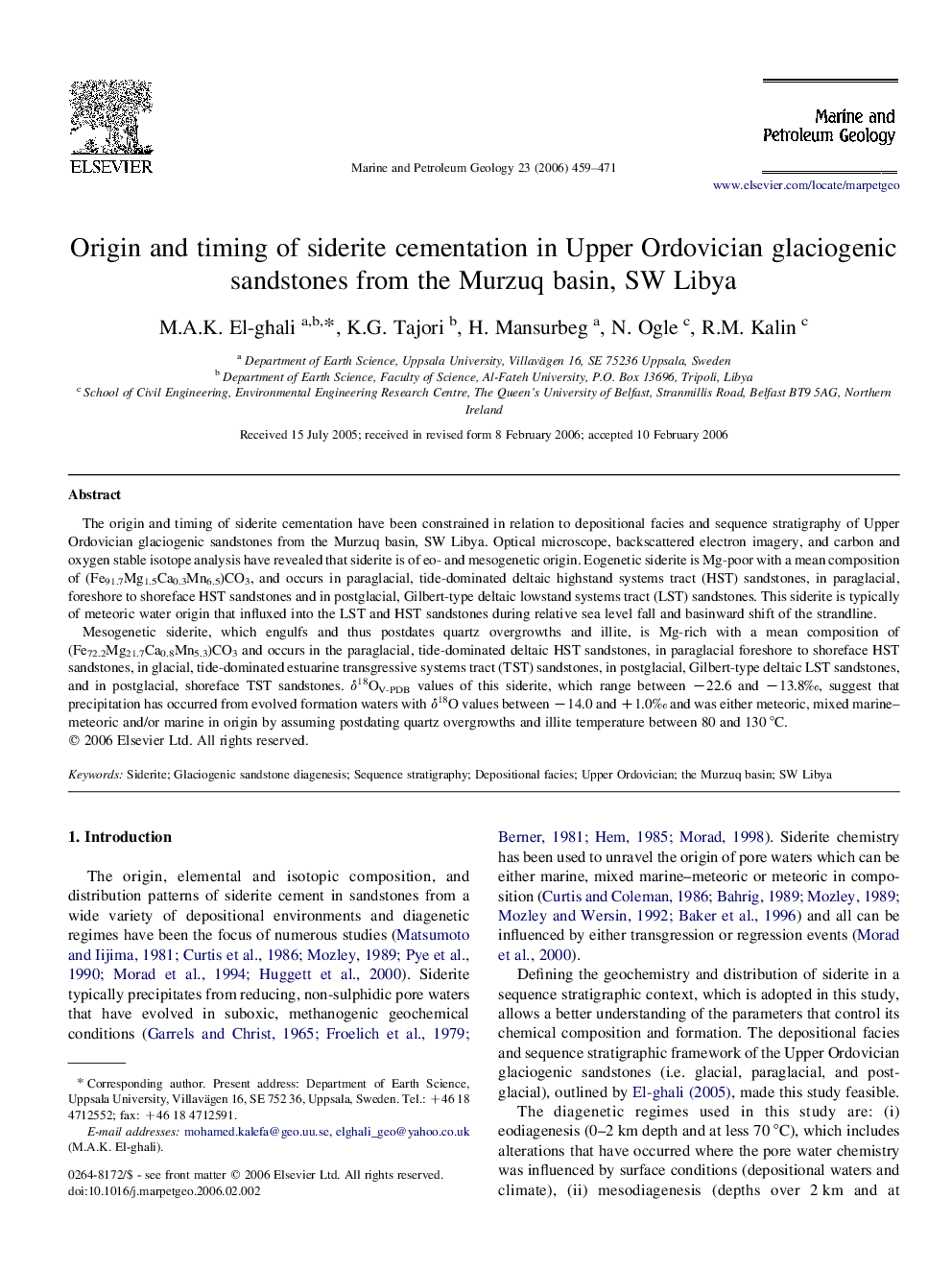| کد مقاله | کد نشریه | سال انتشار | مقاله انگلیسی | نسخه تمام متن |
|---|---|---|---|---|
| 4696723 | 1351709 | 2006 | 13 صفحه PDF | دانلود رایگان |

The origin and timing of siderite cementation have been constrained in relation to depositional facies and sequence stratigraphy of Upper Ordovician glaciogenic sandstones from the Murzuq basin, SW Libya. Optical microscope, backscattered electron imagery, and carbon and oxygen stable isotope analysis have revealed that siderite is of eo- and mesogenetic origin. Eogenetic siderite is Mg-poor with a mean composition of (Fe91.7Mg1.5Ca0.3Mn6.5)CO3, and occurs in paraglacial, tide-dominated deltaic highstand systems tract (HST) sandstones, in paraglacial, foreshore to shoreface HST sandstones and in postglacial, Gilbert-type deltaic lowstand systems tract (LST) sandstones. This siderite is typically of meteoric water origin that influxed into the LST and HST sandstones during relative sea level fall and basinward shift of the strandline.Mesogenetic siderite, which engulfs and thus postdates quartz overgrowths and illite, is Mg-rich with a mean composition of (Fe72.2Mg21.7Ca0.8Mn5.3)CO3 and occurs in the paraglacial, tide-dominated deltaic HST sandstones, in paraglacial foreshore to shoreface HST sandstones, in glacial, tide-dominated estuarine transgressive systems tract (TST) sandstones, in postglacial, Gilbert-type deltaic LST sandstones, and in postglacial, shoreface TST sandstones. δ18OV-PDB values of this siderite, which range between −22.6 and −13.8‰, suggest that precipitation has occurred from evolved formation waters with δ18O values between −14.0 and +1.0‰ and was either meteoric, mixed marine–meteoric and/or marine in origin by assuming postdating quartz overgrowths and illite temperature between 80 and 130 °C.
Journal: Marine and Petroleum Geology - Volume 23, Issue 4, May 2006, Pages 459–471